Digital-Lifestyles is pleased to have Lawrence Dudley writing for us. All too often articles about the things teenagers are interested in are written by people old enough to be their parents. What teenagers are thinking isn’t represented. Lawrence will give you a point of view that you won’t find in other publications. You see Lawrence _is_ a teenager.
 Happy New Year!!Since the New Year has just begun, a piece focusing on last year, the one that has just begun and the developments suspected to emerge during it seemed justified.
Happy New Year!!Since the New Year has just begun, a piece focusing on last year, the one that has just begun and the developments suspected to emerge during it seemed justified.
It’s strange in many ways, to look back on a space of time as long as a year in tech history. Technology evolves so rapidly that a time span of even as little as a week can seem like a month.
2005 was hailed by many as ‘The Year Of HD’: More and more High Definition TVs and displays have become available, and the recently launched Xbox 360 supports HD out of the box. HD promises us richer colours, and most importantly a resolution higher than the abysmal 500×300 or so resolution offered by a lot of standard definition televisions.
The price of HD equipment also dropped by a huge amount. A year ago, I remember seeing prices that one just couldn’t justify for a TV, with £3,000 not being an unusual sum of money to see for a HD television.
Walking into UK Electronics retailer, Dixons, the other day, I came across a set that cost a ‘mere’ £1,000. While a thousand pounds is still a lot of money, it’s a much more realistic price for a television than the three grand of a year ago. As far as I am concerned then, the ‘Year of HD’ was certainly a raging success.
I know a lot of people in technology make all sorts of predictions, and a lot of them turn out to be false, but there is one prediction I am fairly confident in making: 2006 will be THE year of the home entertainment computer.
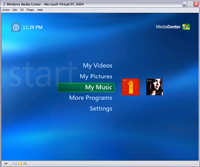 You might wonder why I am so confident in this prediction: Afterall, Microsoft has been pushing out Windows Media Center for a good few years now, and they still haven’t gained dominance. The deciding factor for this year, I believe, will be the fact that Apple is now in the market.
You might wonder why I am so confident in this prediction: Afterall, Microsoft has been pushing out Windows Media Center for a good few years now, and they still haven’t gained dominance. The deciding factor for this year, I believe, will be the fact that Apple is now in the market.
On 12th October last year, Apple unveiled their first media-oriented computer, the iMac G5 which featured a remote control and accompanying software for watching DVDs, slideshows, playing music and movies. While the product’s reception was great, and the media loved it, nothing much has been heard of it since.
A nice gimmick, sure, but nothing more. It wasn’t about to replace the box under the TV, or indeed the TV itself because it missed one important feature: The ability to watch actual live television with it.
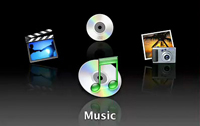 There were of course enhancements that could be purchased which made this possible, but they are awkward and use a different remote control. Never mind having different remote controls for different boxes, this was a case of two remote controls for the same one, and I for one know how frustrating it is to lose a remote. Having two of them increases the chance of losing one. Apart from this it wasn’t a polished affair, and the software to facilitate a media centre-like experience wasn’t mature enough.
There were of course enhancements that could be purchased which made this possible, but they are awkward and use a different remote control. Never mind having different remote controls for different boxes, this was a case of two remote controls for the same one, and I for one know how frustrating it is to lose a remote. Having two of them increases the chance of losing one. Apart from this it wasn’t a polished affair, and the software to facilitate a media centre-like experience wasn’t mature enough.
What makes me think this will change? One word: Macworld in San Francisco next week. Apple are poised to do to video what they did to music, and I am confident they will pull it off with a rush of brushed aluminum and cool white plastic, accompanied with their usual style.
In the past, Apple haven’t briefed journalists in advance. There were of course all the usual rumour sites, and their fan base has always been prominent on the Web.
 However, this has always been on quite specific Mac-related Websites, and not in main stream media.
However, this has always been on quite specific Mac-related Websites, and not in main stream media.
Over the past few days however, the rumours have increased to such a level that popular news site Digg.com had almost one out of every two stories it carried relating to Apple in one way or another. I got a familiar buzz from this – something must be going on. Imagine my surprise then when I opened the newspaper this morning, only to find a nice big picture of Steve Jobs on the front cover of one of the inserts.
One thing’s for sure, San Francisco 2006 is going to be BIG. Along with a slew of expected Intel Apple Macs (yes, Apple are moving to the Intel architecture), a product is expected that, if released, could transform the way we consume media.
Think of it as an iPod for your living room. It downloads music, videos and films, can display and record television, radio and any other input source and can pipe audio to any room in the house, wirelessly, thanks to the existing Airtunes technology. Whether this is a dream that will soon become reality or not, will be revealed in the next few days.
It may of course be that Apple ship this wonder product later than this, but I have a feeling, only a feeling mind, that it will be at Macworld San Francisco.
So what about competitors? What are Microsoft doing about all this? It seems that Windows Vista will ship with a media center module built-in, meaning that it isn’t necessary to buy a separate Windows Media Center machine to run it on. However, not many details exist about this, and the release date isn’t certain yet, although it is scheduled for sometime in 2006.
There’s not much else to say until it becomes apparent what is released during the year, but I shall be doing a special piece covering the developments from Mac World San Francisco on or around the 12th of January. Here’s to a good year in media and technology!
 Fujifilm have rolled out their new 5.1 million pixel FinePix V10 Zoom, which they’re billing as a “next-generation digital compact camera with distinctive looks and an extra dose of fun.”
Fujifilm have rolled out their new 5.1 million pixel FinePix V10 Zoom, which they’re billing as a “next-generation digital compact camera with distinctive looks and an extra dose of fun.”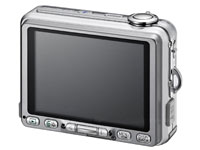 These include a shooting game, blockbuster and a maze puzzle, played via the camera’s controls which have been positioned like a console for extra playability.
These include a shooting game, blockbuster and a maze puzzle, played via the camera’s controls which have been positioned like a console for extra playability. Although we’ve never felt the urge to play a shoot ’em up on our digital cameras, the rest of the camera seems to shape up pretty well, with the FinePix V10 Zoom sporting a large three inch, 230,000 pixels LCD screen in a pocketable design.
Although we’ve never felt the urge to play a shoot ’em up on our digital cameras, the rest of the camera seems to shape up pretty well, with the FinePix V10 Zoom sporting a large three inch, 230,000 pixels LCD screen in a pocketable design.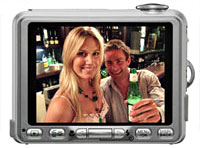 The camera boasts Fujifilm’s excellent Super CCD HR sensor, with their Real Photo Technology offering a huge range of sensitivity from ISO64 to ISO1600, making the camera suitable for low light, ‘natural’ photography.
The camera boasts Fujifilm’s excellent Super CCD HR sensor, with their Real Photo Technology offering a huge range of sensitivity from ISO64 to ISO1600, making the camera suitable for low light, ‘natural’ photography. Sadly, Fujifilm are sticking with their rather obscure xD-Picture Card, which means that most photographers switching brands will have to invest in a new memory card format.
Sadly, Fujifilm are sticking with their rather obscure xD-Picture Card, which means that most photographers switching brands will have to invest in a new memory card format.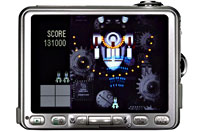 We’re not so convinced of the wisdom of bolting on arcade games on to a camera though – not only does it seem an unconvincing example of digital convergence, it’s also likely to result in a dead camera battery.
We’re not so convinced of the wisdom of bolting on arcade games on to a camera though – not only does it seem an unconvincing example of digital convergence, it’s also likely to result in a dead camera battery.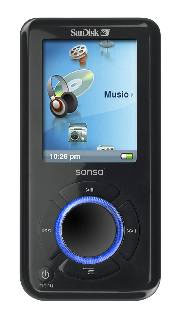 Sandisk have whipped out two iPod nano-style flash-based music players at CES 2006.
Sandisk have whipped out two iPod nano-style flash-based music players at CES 2006.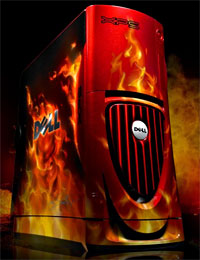 Clearly suffering from an overdose on the hyperbole intake, Michael Dell has been getting all lyrical about Dell’s new ideas, unveiled at CES 2006.
Clearly suffering from an overdose on the hyperbole intake, Michael Dell has been getting all lyrical about Dell’s new ideas, unveiled at CES 2006.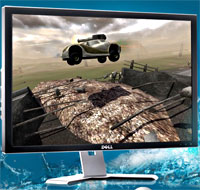 First up is the new Dell XPS 600 Renegade, a powerful, high-end gaming PC described as a (here we go again) ‘manifestation of power so pure it can only be described as supernatural.’
First up is the new Dell XPS 600 Renegade, a powerful, high-end gaming PC described as a (here we go again) ‘manifestation of power so pure it can only be described as supernatural.’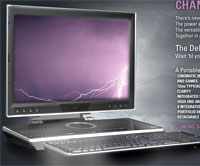 The attractive monitor offers WQXGA resolution (that’s 2560×1600 pixels to normal people), fast 11ms grey-to-grey response time, 700:1 contrast ratio and an integrated 9-in-2 memory card reader.
The attractive monitor offers WQXGA resolution (that’s 2560×1600 pixels to normal people), fast 11ms grey-to-grey response time, 700:1 contrast ratio and an integrated 9-in-2 memory card reader.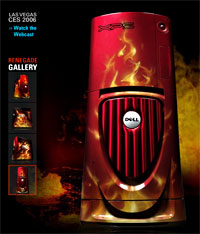 We’re not sure what a ‘portfolio’ design is, but this thing’s sure got it, along with ‘anodized articulating hinges’ and a detachable wireless keyboard and mouse.
We’re not sure what a ‘portfolio’ design is, but this thing’s sure got it, along with ‘anodized articulating hinges’ and a detachable wireless keyboard and mouse. Web browser company Opera today announce they’re bring their Web browser with AJAX support to chips for use in Consumer Electronics (CE) applications.
Web browser company Opera today announce they’re bring their Web browser with AJAX support to chips for use in Consumer Electronics (CE) applications. They’ve been putting their browsers on different platforms for a while, like the
They’ve been putting their browsers on different platforms for a while, like the 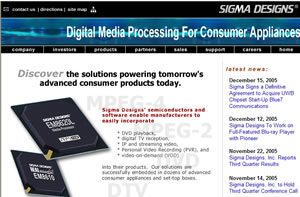 We’re sure you, dear reader, know what AJAX is, but just incase – it stands for Asynchronous JavaScript and XML. This translates to being able to use a Web browser more like a computer-based application.
We’re sure you, dear reader, know what AJAX is, but just incase – it stands for Asynchronous JavaScript and XML. This translates to being able to use a Web browser more like a computer-based application.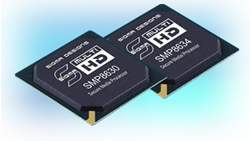 The most often cited example is Google’s Gmail.
The most often cited example is Google’s Gmail.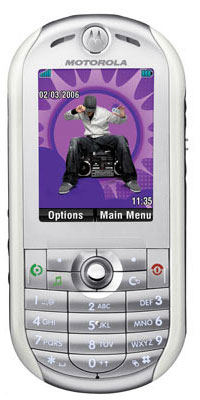 Motorola says adieu to Apple and bonjour to Linux as it unveiled its shiny new ROKR E2 phone at the Consumer Electronics Show today.
Motorola says adieu to Apple and bonjour to Linux as it unveiled its shiny new ROKR E2 phone at the Consumer Electronics Show today.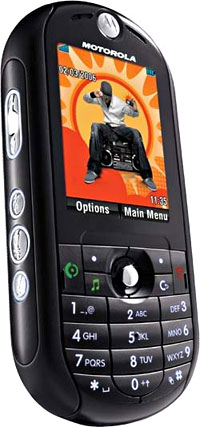 Running on a new Linux-based operating system, the Motorola ROKR E2 also includes a high-res 320×240 screen, a 1.3 megapixel camera with video recording, a built-in FM radio, Opera Web browser Bluetooth (supporting wireless music streaming to stereo Bluetooth headphones), and joy-of-joys – a standard 3.5mm stereo headphone jack and not one of those ruddy annoying mini sockets that are incompatible with normal headphones.
Running on a new Linux-based operating system, the Motorola ROKR E2 also includes a high-res 320×240 screen, a 1.3 megapixel camera with video recording, a built-in FM radio, Opera Web browser Bluetooth (supporting wireless music streaming to stereo Bluetooth headphones), and joy-of-joys – a standard 3.5mm stereo headphone jack and not one of those ruddy annoying mini sockets that are incompatible with normal headphones.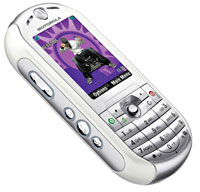 In the absence of iTunes, Motorola intends to push their iRadio Music Service, a subscription music service that uses mobile handsets as the base platform.
In the absence of iTunes, Motorola intends to push their iRadio Music Service, a subscription music service that uses mobile handsets as the base platform. Best compact:
Best compact: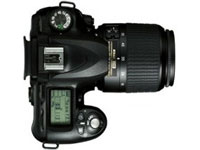 Best dSLR
Best dSLR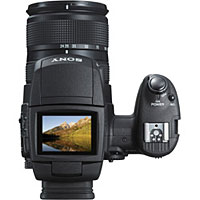 Sony Cyber-shot DSC-R1
Sony Cyber-shot DSC-R1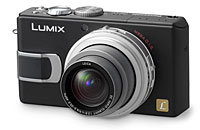 The Panasonic Lumix LX1
The Panasonic Lumix LX1 We like “world firsts” so when integrated-circuit providers Micronas announced that they were the planet’s first company to incorporate a Dolby Virtual Speaker into a chipset designed specifically for televisions, we simply had to tell you all about it.
We like “world firsts” so when integrated-circuit providers Micronas announced that they were the planet’s first company to incorporate a Dolby Virtual Speaker into a chipset designed specifically for televisions, we simply had to tell you all about it.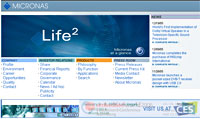 Dolby Virtual Speaker creates the illusion of five speakers by using room modelling techniques. This, apparently, sets it apart from other virtualizers.
Dolby Virtual Speaker creates the illusion of five speakers by using room modelling techniques. This, apparently, sets it apart from other virtualizers.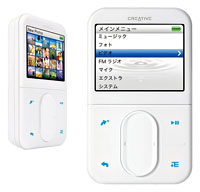 Creative Zen Vision:M
Creative Zen Vision:M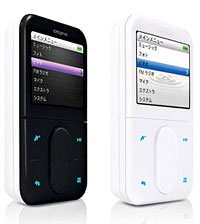 The player’s a versatile chap too, with the Vision:M outgunning the iPod by supporting a wider range of formats, like MP3, WMA and PlaysForSure audio formats and MPEG1/2/4, DivX and XviD, Motion JPEG and WMV for video.
The player’s a versatile chap too, with the Vision:M outgunning the iPod by supporting a wider range of formats, like MP3, WMA and PlaysForSure audio formats and MPEG1/2/4, DivX and XviD, Motion JPEG and WMV for video.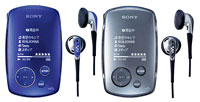 Sony NW-A1000
Sony NW-A1000 The palm sized player (88 x 55 x 19 mm) comes with a built in 6GB hard drive and supports MP3 files as well as Sony’s ATRAC3 and ATRAC3+ audio formats. Battery life is claimed at 20 hours (although several reviews have found that figure to be wildly optimistic).
The palm sized player (88 x 55 x 19 mm) comes with a built in 6GB hard drive and supports MP3 files as well as Sony’s ATRAC3 and ATRAC3+ audio formats. Battery life is claimed at 20 hours (although several reviews have found that figure to be wildly optimistic).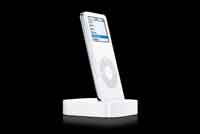 Apple iPod Nano
Apple iPod Nano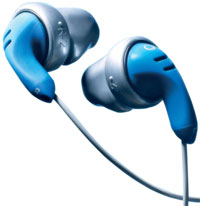 In-ear headphones (“earbuds”) like those sold with the iPod and other music players can increase the risk of hearing loss, according to a US audiologist (a what?!)
In-ear headphones (“earbuds”) like those sold with the iPod and other music players can increase the risk of hearing loss, according to a US audiologist (a what?!) We can certainly verify that some folks seem oblivious to the risk, blasting their music so high that we can hear the annoying “tssk chk tssk chk” leaking from in-ear phones over the thunderous rattle of a tube train.
We can certainly verify that some folks seem oblivious to the risk, blasting their music so high that we can hear the annoying “tssk chk tssk chk” leaking from in-ear phones over the thunderous rattle of a tube train. Garstecki proposes the 60%/60 minute rule as a solution – this involves listening to an MP3 device for no longer than about an hour a day and at levels below 60% of maximum volume.
Garstecki proposes the 60%/60 minute rule as a solution – this involves listening to an MP3 device for no longer than about an hour a day and at levels below 60% of maximum volume.